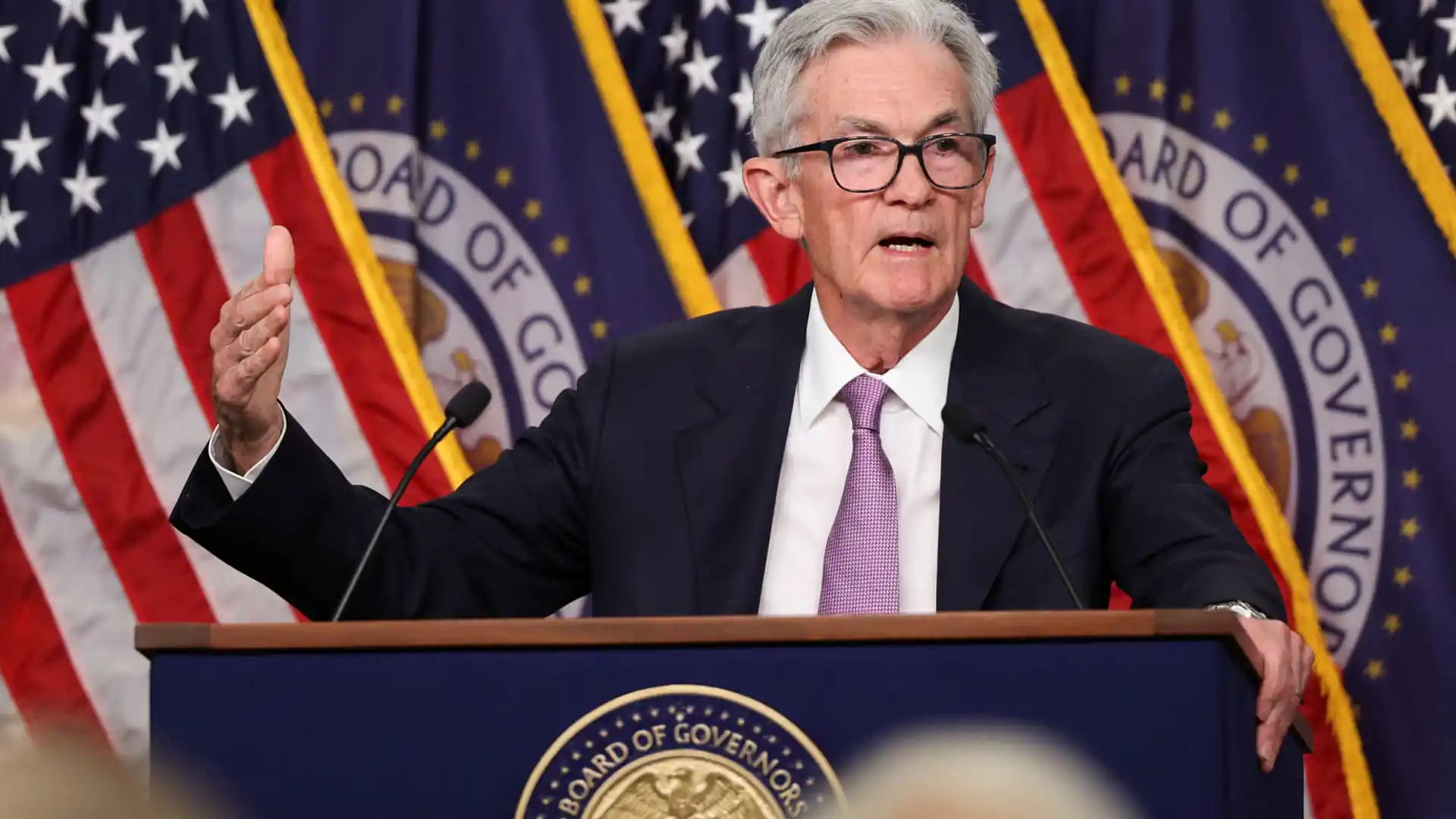[ad_1]
Federal Reserve Chairman Jerome Powell holds a news conference following a two-day meeting of the Federal Open Market Committee on interest rate policy in Washington, United States, on September 18, 2024. REUTERS/Tom Brenner
Tom Brenner | Reuters
Lower interest rates are generally good news for banks, especially when the cuts are not a harbinger of a recession.
In effect, lower rates will slow the migration of money that has occurred over the past two years as customers have shifted their cash from checking accounts to higher-yielding options like CDs and funds of the money market.
When the Federal Reserve lowered its benchmark rate by half a percentage point last month, it marked a turning point in its management of the economy and announced plans to cut rates by two more percentage points, according to central bank projections, which boosted the outlook. for banks.
But the journey likely won’t be easy: Continuing concerns about inflation could mean the Fed won’t cut rates as much as expected and Wall Street’s projections for improving net interest income (the difference between what a bank earns by lending money) or investing in securities and what this returns to depositors – may need to be remembered.
“The market is rebounding on the basis that inflation appears to be reaccelerating, and there are questions about whether we will see the Fed take a pause,” said Chris Marinac, research director at Janney Montgomery Scott, in an interview. “This is my fight.”
So when JPMorgan Chase As bank earnings releases begin Friday, analysts will be looking for any guidance managers can give on net interest income in the fourth quarter and beyond. The bank is expected to report earnings per share of $4.01, down 7.4% from the year-ago period.
Known unknowns
Although all banks are expected to ultimately benefit from the Fed’s easing cycle, the timing and magnitude of this change is unknown, depending on both the rate environment and the interaction between asset sensitivity and liabilities of a bank to falling rates.
Ideally, banks will benefit from a period when funding costs fall faster than returns on income-generating assets, thereby increasing their net interest margins.
But for some banks, assets will fall faster than their deposits at the start of the easing cycle, meaning their margins will take a hit in coming quarters, analysts say.
For large banks, NII will decline by 4% on average in the third quarter due to tepid loan growth and a lag in the revaluation of deposits, Goldman Sachs banking analysts led by Richard Ramsden said in a note from October 1. Deposit costs for large banks will continue to rise in the fourth quarter, the note said.
Last month, JPMorgan alarmed investors when its The president said expectations for the NII next year were too high, without giving further details. It’s a warning that other banks may be forced to give, analysts say.
“Clearly, as rates fall, deposit revaluation pressure lessens,” JPMorgan Chairman Daniel Pinto told investors. “But as you know, we are very sensitive to assets.”
However, there are compensations. The rate cut should help big banks’ operations on Wall Street, as they tend to see higher trading volumes when rates fall. Morgan Stanley analysts recommend holding Goldman Sachs, Bank of America And Citi Group for this reason, according to a September 30 research note.
Regional optimism
Regional banks, which bore the brunt of the pressure from rising funding costs when rates were rising, are seen as the biggest beneficiaries of the rate cut, at least initially.
This is why Morgan Stanley analysts have raised their ratings on American Bank And Sions last month, while lowering their recommendation on JPMorgan from overweight to neutral.
Bank of America and Wells Fargo have lowered their expectations for NII throughout this year, according to Charles Peabody, an analyst at Portales Partners. That, combined with the risk of higher-than-expected loan losses next year, could make 2025 disappointing, he said.
“I wonder about the pace of NII ramp-up that people have built into their models,” Peabody said. “These are difficult dynamics to predict, even if you are the management team.”

